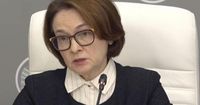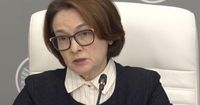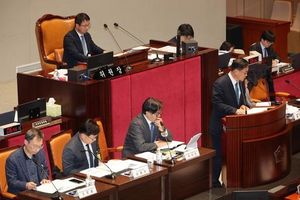Russia’s central bank made a notable move on Friday, September 12, 2025, lowering its benchmark interest rate by one percentage point to 17%. The decision, as reported by AFP and ABC, comes at a time when the Russian economy is showing clear signs of strain from mounting government spending—largely tied to the ongoing war in Ukraine—and a sharply rising budget deficit. While the rate cut aims to stimulate growth and ease the burden on businesses, it also highlights the delicate balancing act facing policymakers as they try to contain high inflation without choking off what’s left of economic momentum.
For months, Russia’s central bank had kept interest rates high, peaking at 21%, in a bid to curb surging inflation. But with economic activity now slowing and borrowing costs weighing heavily on businesses, the bank has shifted gears. According to AFP, the bank acknowledged that elevated rates were hampering growth, prompting the move to ease pressure on the private sector. The hope is that lower rates will encourage investment and spending, helping to counteract the drag from other economic headwinds.
Yet, inflation remains stubbornly high. The official rate sits at 8.2%, only slightly down from previous months, and still well above the central bank’s target. The bank itself warned that “inflation expectations have not changed considerably in recent months,” suggesting that the risk of persistent price rises remains. This persistent inflation complicates the central bank’s calculus—cut rates too far or too fast, and price growth could accelerate, eroding household purchasing power and undermining confidence.
Economic growth figures paint a mixed picture. Year-on-year growth slowed to 1.1% in the second quarter of 2025, down from 1.4% in the first quarter and a much more robust 4.5% at the end of 2024. On a quarterly basis, the economy actually contracted by 0.6%, indicating a recent loss of momentum. It’s a sobering turn for a country that, despite Western sanctions and the loss of lucrative gas sales to Europe, had previously shown surprising resilience.
The government’s budget deficit is a particular source of concern. The gap between spending and revenue surged to 4.9 trillion rubles—about $58 billion—in the first seven months of 2025, compared with just 1.1 trillion rubles a year earlier. According to the Kyiv School of Economics, government spending reached 129% of planned levels during this period, driven in large part by defense outlays and recruitment bonuses. Oil and gas revenues, long the backbone of Russia’s fiscal health, fell by 19% compared with the previous year as global prices softened. This double blow—rising expenses and falling income—has forced the government to rely more heavily on domestic financing.
To plug the deficit, the government is selling ruble-denominated bonds to domestic banks. These institutions, anticipating further rate cuts, have been willing buyers, providing the state with the cash it needs to keep spending. It’s a solution that works—for now—but it also raises questions about the sustainability of such an approach if inflation remains high and economic growth continues to slow.
Despite these challenges, some indicators remain surprisingly positive. Unemployment is at record lows, and household incomes are actually rising. Recruitment bonuses and increased defense spending have helped prop up local demand, providing a cushion against the broader slowdown. As AFP notes, these factors have helped the economy weather the immediate shocks of war and sanctions, at least on the surface.
Still, the underlying pressures are unmistakable. The central bank’s rate cut, according to ABC, is intended to “support growth and business activity as the economy slows and the government budget deficit increases.” But it also highlights the tension between supporting a wartime economy and keeping inflation under control. Policymakers are walking a tightrope, trying to provide enough stimulus to prevent a deeper downturn without unleashing a new wave of price increases.
For Russian businesses, the rate cut is a welcome relief. High borrowing costs had made it difficult for companies to invest, expand, or even maintain operations. Lower rates should, in theory, make credit more accessible and affordable, encouraging entrepreneurship and job creation. But with inflation expectations still elevated, there’s a risk that any boost to demand could simply feed into higher prices rather than real economic growth.
The broader context is equally complex. Western sanctions remain in place, limiting Russia’s access to international capital markets and cutting off key export revenues. The loss of gas sales to Europe has forced the country to look for new markets, often at lower prices and with higher logistical costs. At the same time, the government’s commitment to maintaining defense spending means that other areas of the budget may face cuts, potentially undermining long-term growth prospects.
There’s also the question of how long domestic banks will be willing—and able—to keep financing the deficit by buying government bonds. If inflation remains high and interest rates continue to fall, the real returns on these bonds could turn negative, making them less attractive. At that point, the government may face tougher choices about how to balance its books.
Looking ahead, the central bank’s next steps will be closely watched by markets and policymakers alike. Further rate cuts are possible, especially if economic growth continues to falter. But any move to loosen monetary policy further will have to be weighed against the risk of reigniting inflation. As the bank itself cautioned, “inflation expectations have not changed considerably,” underscoring the persistent uncertainty facing the Russian economy.
Ordinary Russians are feeling the effects in different ways. While rising household incomes and low unemployment have provided some relief, the high cost of living remains a concern for many. The government’s efforts to support demand through bonuses and spending may help in the short term, but the sustainability of these measures is far from guaranteed.
In the end, Russia’s central bank is caught between a rock and a hard place. The decision to cut rates to 17% reflects an urgent need to support growth and business activity, but it also exposes the risks of letting inflation run unchecked. With government spending at record highs, revenues under pressure, and the war in Ukraine showing no signs of ending, the path forward is anything but clear.
As policymakers weigh their options, one thing is certain: the coming months will test the resilience of Russia’s economy and the skill of those tasked with steering it through turbulent waters.





